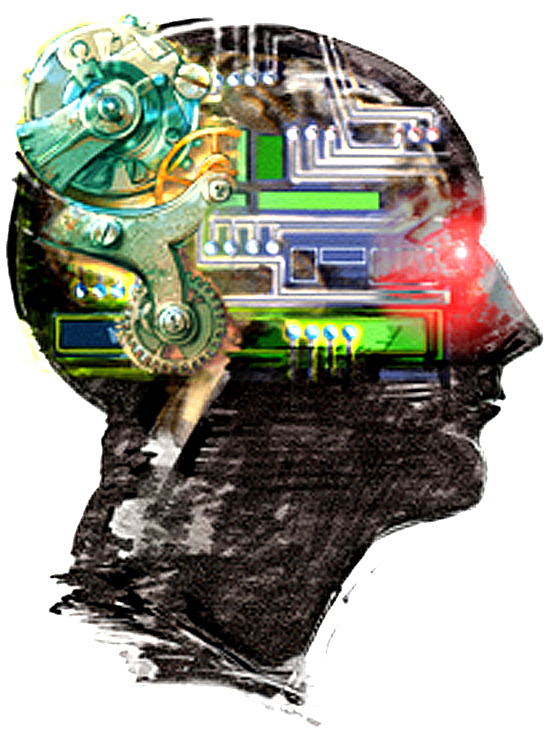In Charlie O’Donnell’s post titled “On Patterns”, it is easy to realize the subtle social behaviors that we encounter on a daily basis, such as familiarity, outright bias, and obliviousness:
“In the same way, I understand why a few extra neurons fire when you approach a business office and the person at the front desk is male. I understand the pause people feel when you look at a startup bio page and you notice that the CTO is female. I don’t think you are a bad person for noticing this difference. In fact, I’d venture to say you’d be a little less human if you didn’t–because it is simply that: different than what you are used to.”
This feature of the human mind is an evolutionary adaptation called the “Associative Memory” and links objects together through learned relationships over time with prolonged exposure. The associative memory structure is the basis for machine learning algorithms, neural networks, and acts as the facilitator for many “intelligent” systems that we interact with on the web on a daily basis. A good example of a machine learning algorithm in real life is Phin Barnes’ account of watching Google’s Search algorithm learning to predict what people in a localized area are going to search for.
For great examples of the associative memories and other unique quirks of the brain, I HIGHLY recommend Brain Bugs. As an avid neuroscience/evolutionary biology geek, I’d have to say that Brain Bugs has been one of the best written books of the last few that I have read. One noteworthy example of the power of the associative memory takes the form of three successive questions to be answered with the first thing that comes to mind:
- Name any country in Africa.
- What are the two opposing colors in chess?
- Name any animal.
How many of you answered “zebra” or some other African animal that has black and white? Brain Bugs refers to this phenomenon as psychological priming. I have performed this experiment on several friends, family, and co-workers, and have experienced a nearly 90% convergence of question number three, save for a couple of unique cases. I asked a co-worker of mine who runs a farm in Virginia in his spare time, who answered question number three with “horse”. His answer initially surprised me, because he was one of the first individuals that I had performed the experiment on and I had the expectation that everyone was going to say “zebra.” After thinking about this, it is easy to understand why he said “horse” instead of zebra: He is a farmer! His mental association between animal and horse is far stronger than the psychological effect of a priming exercise. His near daily exposure to horses and other animals has created such a strong bond between these “horse” and “animal” that the relationship between the two words has been made nearly immutable in the context of this exercise.
Now, lets apply the associative memory to other social inputs, such as sexuality, religion, and politics. Why are some subjects so controversial, yet other subjects are everyday news fodder? The key is prolonged exposure. A few solid examples:
- In sexuality, most hatred and misunderstanding arises in places where alternative sexual preferences are not the norm
- In religion, geographic isolation of religious beliefs can create large populations of similar beliefs (a la “Bible Belt” in the southeastern United States)
- In politics, the same sociological/geographic factors that affect religion can be seen in political beliefs
This geographic isolation of thought creates an echo chamber effect, muffling any new societal inputs that could make their way into the local culture. The great equalizer in the struggle of knowledge sharing is the internet and unbiased media. Technology has provided isolated sub-cultures with access to parts of the world previously inaccessible. Now a child growing up in an anti-gay town can learn that gay people are living, breathing humans, just like them; A child growing up in an orthodox Jewish household can see that other religions exist and have their own benefits and detriments; A child growing up in a conservative state can approach voting with an educated opinion on why they are conservative (or liberal) rather than hating the opposing views because their parents (and everyone around them) hates them.
Unfortunately, the permeation of new social artifacts into society require slow progress and prolonged exposure. Charlie O’Donnell’s piece mentioned his initial pause the first time he saw a female CTO, but I’m certain the second time around felt completely normal. Neural re-wiring processes were started during the women’s suffrage and civil rights movements, and continues to a lesser extent today, but any change in society requires monumental shifts in the way we approach the world. In the end, it is all about having an open mind and minimizing inherent bias.
For more reading on neuroscience and evolutionary psychology check out:
- The Selfish Gene by Richard Dawkins
- On Intelligence by Jeff Hawkins
- Emotional Intelligence by Daniel Goleman

